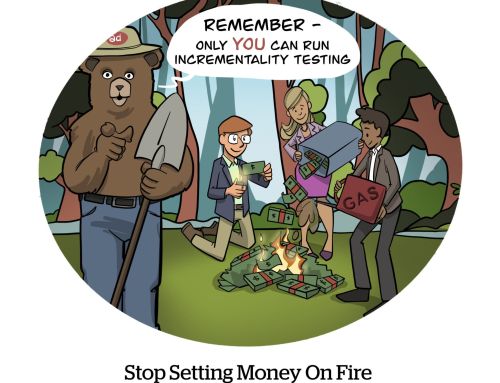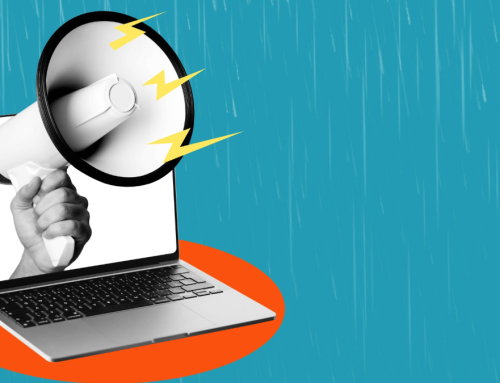What’s the difference between social media and entertainment, and on which side of the fence do the major platforms sit?
Is Instagram a social app, or an entertainment platform? What about Snapchat, or TikTok?
Increasingly, it’s algorithms that are defining what we see in each app, and in that respect, it’s more about straight-up entertainment than it is about staying up to date with your friends. But what does that mean for the broader social media industry, and how marketers go about re-aligning their approach within this shift?
“We’re at an inflection point where it’s less about the connections we’re making with people, and more about the content we’re creating,” says Nick Cicero, vice president of strategy at Conviva. “With the heavy shift to video, it’s less about the social graph and more about the entertainment you’re creating.”
Does that mean that you need to look at the content you create and post in a different way? And if so, how should you now be viewing your broader digital marketing plan?
That’s entertainment
Recent research from Omida found TikTok has surpassed Netflix as the second-most popular app among the under-35 set. The platform’s also poised to become the most popular social media destination for video viewing this year, while last year, it trailed Facebook by less than a minute in average viewing time.
Its impact is being felt throughout the industry, particularly as both social media companies and entertainment brands look to replicate its style and format.
As explained by Maria Rua Aguete, Omdia’s senior director:
“For broadcasters, commercial or otherwise, keen to engage younger viewers, the increasing importance of TikTok to reach and grow new audiences should not be understated.”
TikTok’s surge in both video views and users – the platform has about 80 million monthly users in the U.S., 80% of whom are between the ages of 16 and 34 – is prompting marketers to prioritize the channel as part of their social strategies.
But it begs the question, is TikTok a social channel, an entertainment channel or both?
As explained by Leroyson Figueira, a senior creative director at London-based marketing agency 160over90:
“It seems that every new digital platform that is not a website nor a utility app is immediately branded a social platform. Without pausing to think, TikTok has also been branded ‘social’ by our industry when it is anything but.”
Figueira further notes that:
“TikTok has film publishers and a film audience. It’s not at all like Facebook, Instagram or Twitter. It’s more like a TV channel or Netflix than a social platform. But the most democratic channel in history.”
For what it’s worth, TikTok itself considers itself to be an entertainment app.
Earlier this year, Blake Chandlee, TikTok’s president of global business solutions, made this distinction clear:
“They’ve built their algorithms based on the social graph. That is their core competency. We’re an entertainment platform. The difference is significant.”
That variance in perspective also shifts the way that marketers need to consider the app, and as more platforms look to replicate this approach, that also extends to your overall strategy.
A different era
The way that TikTok has approached its model is unique, in that it looks more like a media company that distributes content, as opposed to a social channel that facilitates person-to-person interaction.
As a result of TikTok’s success, other platforms are now looking to follow its lead. Instagram, of course, has Reels, while Snapchat’s Spotlight is its own take on the full-screen, vertical-scrolling video, less driven by who you know, and more by what’s driving overall engagement.
Even entertainment platforms are adopting some of TikTok’s features. The NBA, for example, has included elements like vertical video and “For You” recommendations in its latest app release.
At the same time, the concept of social media as an entertainment source isn’t new. In 2010, data from Edelman showed that 73% of 18-24 year-olds (who would be 30-36 years old now) and 50% of 35-49 year-olds (now 47-61 year-olds) considered social networking sites as a form of entertainment. A majority of respondents also indicated that social networking sites provided better value than music, gaming and television companies.
But this time, it feels different. Where the first iteration of so-called “social entertainment” gave us Vine and Quibi, TikTok has a distinct differentiator and advantage: its algorithm.
As per Cicero:
“The thing with TikTok is the recommendation engine. There are so many people on the platform looking for and creating quality video. The endless loop keeps you scrolling.”
That formula is a big reason why TikTok’s considered more social media than a “traditional” entertainment platform. Those recommendations provide the same dopamine rush that the updates from friends and family once did on Facebook and Instagram, but now, they’re also providing the thrill of discovering something new, in a participatory community.
As explained by Dara Denney, senior director of performance creative at Thesis and host of a marketing-focused YouTube channel.
“[On Facebook], it feels like the ads speak to you more than your friends and family now. TikTok makes it more accessible to not only find those people who share your interests, but to be those people as well.”
In this sense, TikTok switches the paradigm from ‘who you know’ to ‘who you want to be’, which then invites users into the creation process.
What old is new again
This shift from social media as a connection platform to an entertainment source is also being reflected in industry jargon around who brands want to work with. The days of the “influencer” are fading, with brands now clamoring to work with “creators” instead.
As explained by Cicero:
“An ‘Influencer’ is more like a celebrity that you might have a relationship with. Creators have to be more authentic and native – and people can see the difference when they’re not.”
This new approach is one of the main reasons that creators are in such high demand as brand partners.
“The velocity at which you have to produce such content has prevented brands from really jumping in. That’s why they’re looking to creators for help. There are so many creators now that it isn’t difficult for brands to find creators that are aligned with them.”
TikTok itself has helped to fuel this. The platform has its own Creator Marketplace to help brands find potential creative partners, while it also has its Creator Fund which pays real money to participating creators based on content engagement. The two streams provide direct incentive for creators to learn what works, and maximize their content performance, in order to then parlay that success and knowledge into, potentially, a career.
As noted by Denney:
“Creators are inherently becoming their own brands, and there’s a push to get them to monetize their craft.”
That’s good news for brands, because while marketers are used to creating staged, polished promos, TikTok is an entirely different animal.
“[Marketers] always knew how to entertain people, but more and more, it’s about educating people as well. People are using TikTok not only as a source of entertainment but as a way to better themselves.”
Denney points to the rise of creators who offer how-to advice (such as Alexandra Hayes Robinson) or “niche personal problems-based” (like The Hollistic Psychologist). These are in addition to the many TikTok-ers who provide makeup, fashion and other self-help guidance, and who’ve built real, influential communities through their uploads to the app.
This change in perspective in regards to social media usage is a critical shift, and marketers would be wise to consider changing their metrics for success.
“The main metric for social media is attention. With TikTok, it’s more about building a community.”
In this way, being on TikTok is about understanding and building an audience – which sounds awfully similar to what traditional TV programmers have been doing for decades.
It’s not about ‘social’, it’s less about ‘brand voice’ and ‘humanization’ and some of the other buzzwords that have been associated with this more interactive, communicative medium. Now, the dynamic is shifting, which could change your whole approach.











